|
The Geographic Distribution of Federally Assisted Housing: 1997
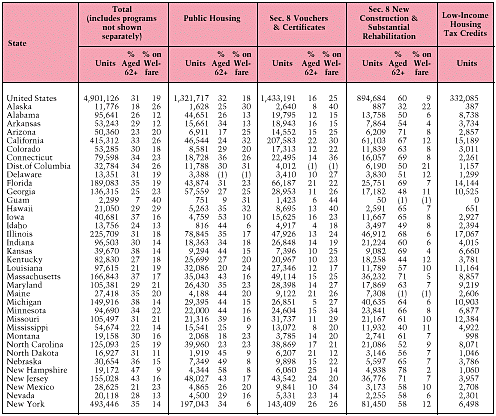
|
|
The Geographic Distribution of Federally Assisted Housing: 1997, cont.
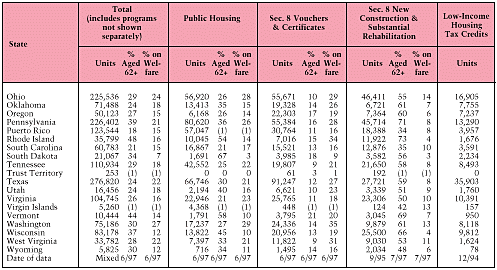
(1) Not enough data reported to show results.
Source: Paul Burke, A Picture of Subsidized Households in 1997, HUD, 1997.
More data are at www.huduser.gov/datasets/assthsg.html.
Sec. 236, Indian Housing, Moderate Rehabilitation, and other FHA programs are included in the total.
Units shown are under contract and either occupied or available for occupancy.
Units that receive multiple HUD subsidies are counted once.
Aged 62+ refers to the head or spouse, whoever is older.
Welfare refers to households that receive the majority of their income from welfare.
|
Telephone Rent Surveys
During 1996 and 1997, HUD and public housing agencies conducted Random Digit Dialing (RDD) telephone surveys of 77 Fair Market Rent (FMR) areas. The purpose was to estimate the typical rent paid by tenants who had recently moved into standard-quality housing units. The results were used to recalculate the FMR, which is set at the
40th-percentile gross rent (including utilities) of standard-quality rental units occupied by recent movers. HUD uses this rent standard in its Section 8 Housing Certificate and Voucher assistance programs. In cases in which the rent survey estimates were statistically different from HUD's estimates, the FMR was increased or decreased. The table below lists the date and 40th-percentile gross rent from all of the 75 RDD surveys conducted by professional firms during 1997 and 2 conducted in late 1996.
|
1996 and 1997 Area Rent Surveys: Professionally Conducted Random Digit Dialing Surveys
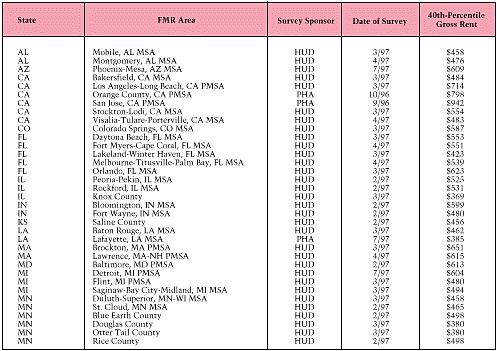
|
|
1996 and 1997 Area Rent Surveys: Professionally Conducted Random Digit Dialing Surveys, cont.
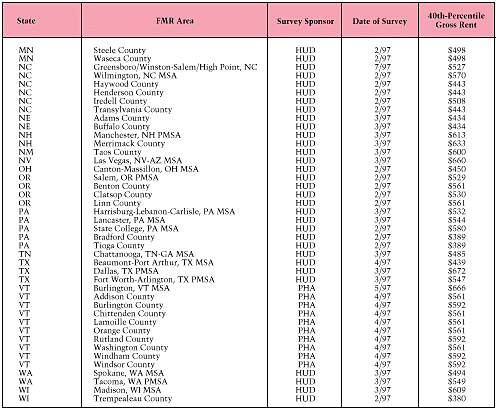
|
HUD also conducted longitudinal surveys to measure the previous year's changes in median rents for metropolitan and nonmetropolitan FMR areas in each HUD region. These rent-change factors are used in HUD programs to adjust rents
for units currently under contract. The metropolitan surveys exclude metropolitan areas covered by separate Consumer Price Index surveys. The 10 regions surveyed are almost the same as the 9 census divisions, except that the Alaska-Idaho-Oregon-Washington region is treated separately from the rest of the Pacific census division.
|
Changes in Rents from 1995 to 1996 (Regional RDD Survey Results)
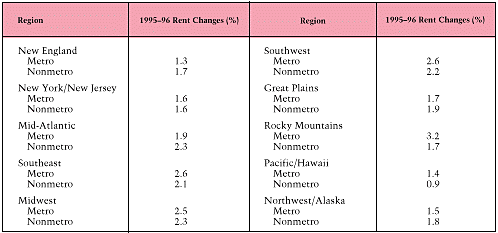
|
|

